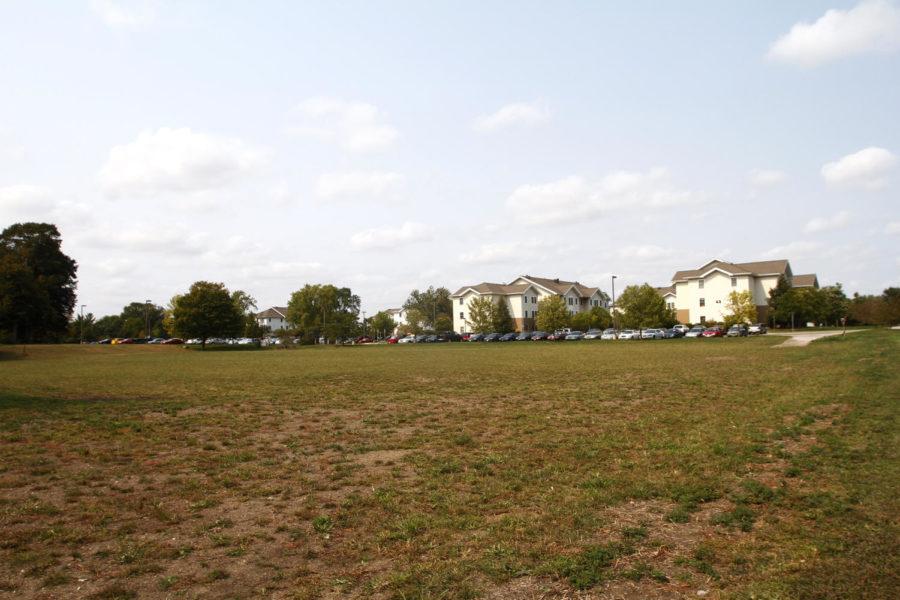672 beds to be added to Freddy Court Apartments
Photo: Megan Wolff/Iowa State Daily
Construction on seven new apartment buildings in Frederiksen Court will begin in November. One of the contruction sites will be in the green space south of the apartments near the railroad tracks.
September 16, 2012
A rising student population and a record-enrollment of freshmen add up to a shortage of available on-campus housing.
Because of the limited space, the Department of Residence has decided to add seven additional apartment buildings at Frederiksen Court. Each building will contain 24 units, giving the university an additional 672 beds.
The apartment buildings are to be situated around the perimeter of Frederiksen Court; three will be on the north side of the complex, one on the west side and three on the south side.
“We are over 100 percent full; it is a burden on our current facilities, and students [in the residence halls] have started reacting to not having a community area,” said Roger Graden, associate director for facilities, in reference to the dens in on-campus living areas being converted into temporary housing units.
The two-phase project in Frederiksen Court is to begin this November. The first phase will include three buildings, which are set to be completed July 1, 2013. The second phase includes the remaining four buildings to be completed by the end of 2013.
The idea for this project sprouted at the beginning of the calendar year when enrollment numbers for this school year were finalizing. The thought of adding on to Frederiksen Court was seen as an ideal situation because of the popularity of the apartment-style living.
The department began to work with the ISU administration, who approved the plan and passed it on to the Iowa Board of Regents. Later in the summer the Board of Regents allowed DOR to hire an architecture firm for the project. The department has one last meeting with the Regents in October to approve the budget and the schematic design of the project.
A substantial question arose during this process, one that drew concern from ISU administration — how was this $24 million project going to be funded?
It has been decided bonds will be issued for the project; the details on this, however, have yet to be completely worked out. Also, the revenue generated from the rental of the buildings will help pay for the cost.
“There is no need to increase fees at all. Only the people using the facilities will cover the cost,” said Graden. “A zero-negative effect on the budget is what we anticipate, and our debt ratio will not change. We will see an increase in operating costs, but those will be combatted by the increase in revenue.”
The department plans to use the same setup and a similar building design plan for the project. Updates from the old plans are set to accommodate the current International Building Code, which is more sensitive to accessible accommodation than the 12-year-old Uniform Building Code.
Members of DOR such as Graden, are always looking toward the future and trying to figure out the big question about where enrollment is headed. They also do not want the issue of housing space to limit students from living on campus.
“The Department of Residence has worked hard to help students with transition of life, we offer more for students than living off campus,” said Graden. “We can see this by the number of students coming back to on-campus housing, and it is continuing to trend upward.”







